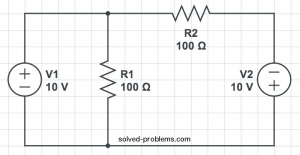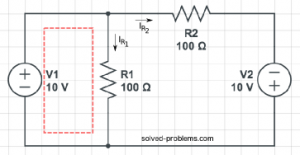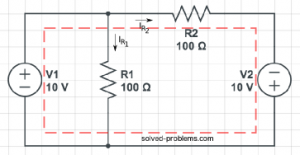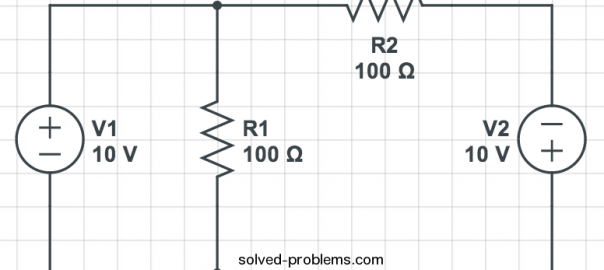Find resistor currents using KVL.

Solution:
![]() and
and ![]() are parallel. So the voltage across
are parallel. So the voltage across ![]() is equal to
is equal to ![]() . This can be also calculated using KVL in the left hand side loop:
. This can be also calculated using KVL in the left hand side loop:

![]() .
.
Now, use Ohm’s law to find ![]() :
:
![]() .
.
To find ![]() , write KVL around the outer loop:
, write KVL around the outer loop:

![]() .
.
Again, use Ohm’s law to determine ![]() :
:
![]() .
.
Now, tell me what is the current passing through ![]() ?
?

0.3
good job!

From KCL:
good work i got aleast some concepts
good, very good. let me know if you need any help.
Please help me to solve the current flow through the below circuit.
My Circuit
So, you have a circuit with a
Let me know if you need more help.
Thank you very much, sir.
Surprisingly, in every guidebook I found the answer 7.5 Amp where there was no explanation behind the answer. But now I know the explanation and also know that correct answer is 5 Amp.
I will post here if I need further help. Thanks again for your help.
You are welcome.
eliminate 10ohm resister becuase current will flow through low resistance patch then it is a series resistance circuit easy you can calculate otherwise let me know
What happens if you reverse the polarity of V2?
good question. is
is  and therefore, the voltage drop on
and therefore, the voltage drop on  will be zero. You can also verify this by KVL around the outer loop:
will be zero. You can also verify this by KVL around the outer loop:

 . The current of
. The current of  is the same as before because its voltage is not changed.
is the same as before because its voltage is not changed.
Actually, it will be quite interesting. The voltage across
And using the Ohm’s law, we conclude that no current passes through
please give me solve two voltage source are given
please help me learn kvl in easy way